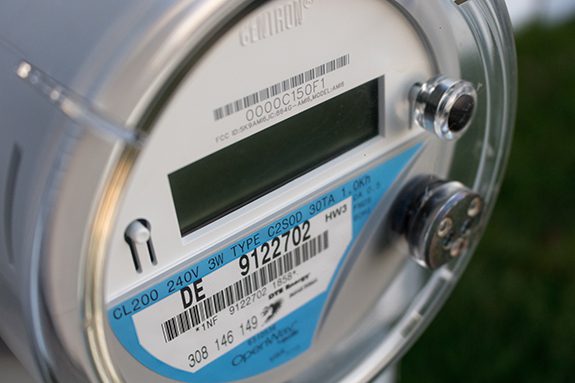Rising electricity prices have been in the news a lot recently. But what does that actually mean for your organization’s electricity costs, and is there anything that you can do about it?
Beginning in the 1990s, many states deregulated their electricity markets. Before deregulation, most utilities owned the power plants that generated electricity. Deregulation separated the entities that generate electricity from the ones that own the distribution to homes and businesses.
To secure the electricity needed for their customers, utilities are part of electricity grids operated by independent system operators (ISOs) and regional transmission organizations (RTOs). A significant portion of the U.S. is impacted by a recent major rate hike by PJM Interconnection, an ISO/RTO that operates in all or parts of Illinois, Delaware, Indiana, Kentucky, Maryland, Michigan, New Jersey, North Carolina, Ohio, Pennsylvania, Tennessee, Virginia, and West Virginia. PJM is one of several regional operators in the nation, and it provides electricity to 21 utilities.
PJM is responsible for making sure there is enough electricity generation on the grid and coordinating electricity transmission to the local utilities. To do this, PJM manages energy markets for electricity procurement throughout the year. In addition, PJM procures capacity to ensure that the periods of highest demand can be accommodated.
The diagram below illustrates how electricity travels, including PJM’s operation of transmission lines subject to the jurisdiction of the Federal Energy Regulatory Commission.
PJM’s Annual Auction Increases Capacity Price
Prices that power generators get for their capacity are set at an annual auction. In July 2024, the PJM auction set the capacity price for June 1, 2025, through May 31, 2026, at $269.92/MW-day, which is about eight times higher than the prior year’s capacity price. The auction in July 2025 set the capacity price for June 1, 2026, through May 31, 2027, at $329.17/MW-day: a further increase of 22%.
Since June 1 of this year, most utility customers have seen monthly electrical bill increases of 10% to 20%—large increases but not triple-digit hikes—because capacity is only one of the components that make up an electric bill. Bills include energy (kWh) or demand (kW) charges, as well as ancillary charges such as support for Energy Efficiency Programs and coverage of distribution losses. The capacity charge may be a separate line item, or it might be included in one of the other charges.
If your facility is served by an electric utility that works with PJM, the capacity charge is based on PJM’s capacity price and your own facility’s peak load contribution (PLC), which is set by your facility’s demand during PJM’s five highest demand hours in the previous year. These times are not known in advance, but they are generally weekday afternoons on the hottest days of the year. Your facility’s PLC for current prices was set last year.
The PLC for the 2026-27 prices has likely already been set this year. Going forward, however, you can work to manage your capacity contribution, in addition to your electricity usage and demand.
Tips for Reducing Capacity Charges
Reducing capacity charges can be as simple as shedding load by turning off lights and equipment. Many utilities have programs that pay facilities to voluntarily reduce load during periods of high demand, and these programs can also be used to offset capacity cost increases. For the long term, capital investments in energy storage projects, such as batteries or thermal storage, can be leveraged to decrease reliance on the grid at times of high demand, thus reducing capacity contributions. In addition, on-site generation, either with renewable energy or a cogeneration plant, can be an effective strategy. Utility incentives may be available to offset costs for these types of projects. GBA can help you review your options and determine what makes sense for your facility or facilities.
In general, projects that save electricity and reduce demand will also help offset rising capacity charges. GBA helps clients identify and implement energy savings with energy studies, retro-commissioning, and monitoring-based commissioning.
Energy studies (ASHRAE Level 1, 2, and 3) identify energy saving measures. These typically include no-cost or low-cost measures that will provide savings quickly as well as capital measures that have a longer payback. Similarly, retro-commissioning (also called existing building commissioning) is a process that identifies, implements, and verifies short-payback measures and quick fixes that have a direct impact on day-to-day operations, with a focus on energy savings.
Monitoring-based commissioning (MBCx), also called ongoing commissioning, uses an analytics platform that imports building automation system (BAS) trend data to identify issues and potential energy savings via a process often referred to as fault detection and diagnostics (FDD). The MBCx platform runs continuously and is used to maintain the persistence of energy saving measures already implemented, helping owners control costs and safeguard their investments. GBA’s own Trend Sumo® FDD platform can be an economical and extremely valuable tool for leveraging your BAS to identify hidden problems with equipment, systems, and controls. Examining the feedback from the software allows our engineers to suggest practical solutions for issues that are unnecessarily driving up clients’ energy costs.
In an era where many facility operators are turning to electrification to help meet decarbonization goals, these major electricity price increases can be disheartening as well as financially painful. Many mitigation strategies are available, but the topic is complex, and an effective response must be tailored to each facility’s unique needs and objectives. GBA’s engineering team stands ready to explore the options and help you come up with a smart, cost-effective plan. Contact us to get started.
Source: Heather R. Beaudoin, PE, LEED AP BD+C, CEM, BEMP, GBE
Diagram source: Federal Energy Regulatory Commission




